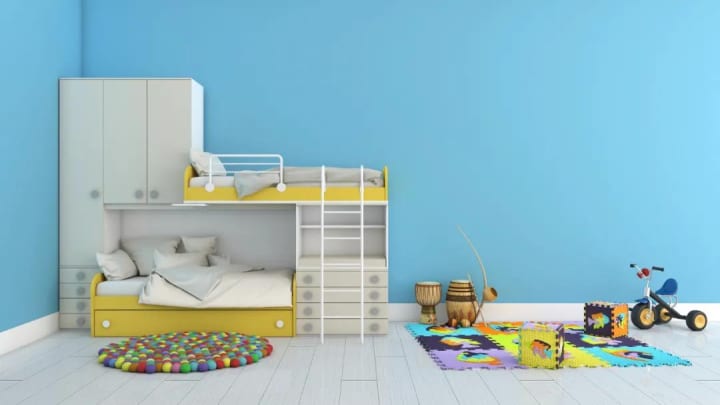Is your home really safe?
Notes for children at home during holidays

Child safety issues during the holidays (such as foreign bodies in the trachea and esophagus, falls, and burn accidents), however, cannot be ignored.
For example, two or three-year-old children accidentally stuck by peanuts, melon seeds, jelly, and other foreign objects and suffocation; due to parental negligence, children were scalded, burned, or fell from upstairs ...... these injuries, are preventable, but the results led to irreparable tragedies.
Here to remind everyone, the holidays must not be taken lightly, is to play at home, but also pay attention to safety. Everyone must grasp useful first aid common sense.
Accidents "the first high incidence"
Home sounds warm and peaceful, full of peace and beauty of the place, but is the "first high incidence of child injuries".

Foreign body suffocation, burns, drowning, etc. are important causes of injury and death for children. Statistics show that hundreds of thousands of children and adolescents under the age of 14 die each year in China due to injuries.
Children spend the most time at home, with all kinds of objects, and children and caregivers are basically in a relaxed and non-vigilant state in this environment at home. These reasons combine to create a high incidence of danger at home. Especially this year, the winter break lasts a long time, children are on vacation, they are very curious, and everything wants to touch and move. Although the child's curiosity needs to be protected, the danger has to be beware
Since the home can not be like a children's playground or kindergarten, as far as possible to exclude dangerous items for children, and can not greatly reduce the time children stay at home, then parents can do, is always vigilant, including the establishing of comprehensive awareness of safety, understand the areas and objects at home with a high incidence of danger, master the authority of first aid knowledge, as well as good placement of items and danger response methods.
For example, when decorating, the location of the home's power outlets should be higher than 1.6 meters to avoid children's contact, and wires should not be exposed; electric fans, electric heaters, and other appliances should have protective covers; matches, lighters, etc. at home, it is best to put the child out of sight, out of reach; try not to let children touch the gas stove, gas water heaters, etc.
Different periods, different dangers
Children develop quickly, and when they are first born, they can't even turn their heads, but they can walk in the blink of an eye. According to the law of baby's development, "2 months can lift their heads, 4 months can roll over, 6 months can sit, 7 months can roll, 8 months can crawl, 1 week old can walk", and even after school, different periods, children may face different dangers.
Before 4 months, children can't roll over. At this time, if a child is accidentally covered by clothing, towels, or quilts, they have no way to pull these things away or shift them, and choking is likely to occur. When a child can roll over after 4 months and crawl at 8 months, the risk of falling out of bed is greatly increased. There are very few children in life who have never fallen out of bed.
After the age of 1, children can walk independently, the range of activities will expand, the possible exposure to danger will also increase, and burns, electrocution, and other accidents occur repeatedly. 2 to 3 years old children are curious, active, lack judgment, but inside the special confidence, the bottom is very strong, also prone to accidents.
If your child has reached the primary and secondary school stage, as they grow older, their knowledge, experience, experience, sense of independence, and range of activities are increasing day by day, and their exposure to danger is increasing, with more and more injuries such as drowning and car accidents.
In addition, children often lack life experience and awareness of danger, the ability to identify and foresee is poorer than adults, slow to react to danger, lack knowledge, and the ability to escape from danger.
Let's have a safety check
Representatives of the Global Child Safety Organization once went into a child's home in Shanghai and found more than 10 child safety hazards such as balconies and windows. To create a safe home environment for children, experts especially proposed "household goods safety inspection 5S principles", namely see (See), rope (String), size (Size), surface (Surface), and standards (Standard).
First: "see (see)"
Parents who are accustomed to the "adult country" often forget that children use the objects in the home in the "little man country" way, so parents should learn to look at the arrangement of objects with the eyes of children.
Second: "Strings"
Children's curiosity will make them play with long strings, which will lead to strings around the neck, so avoid children's access to too long strings.
Third: "Size"
Children like to use the mouth to explore the world, too small items are easy to put into the mouth and cause choking, so the smaller the child, the parent should give the larger the item.
Fourth: "Surface"
Some sharp edges and rough edges on the surface of household items can easily cause injury, so parents should try to ensure that the surface of the items is smooth and soft.
Fifth: "Standard"
When buying household products, parents should carefully check the safety standards related to children's products.
About the Creator
Johann Polischansky
Follow your inner voice, they already know what you want to be






Comments
There are no comments for this story
Be the first to respond and start the conversation.